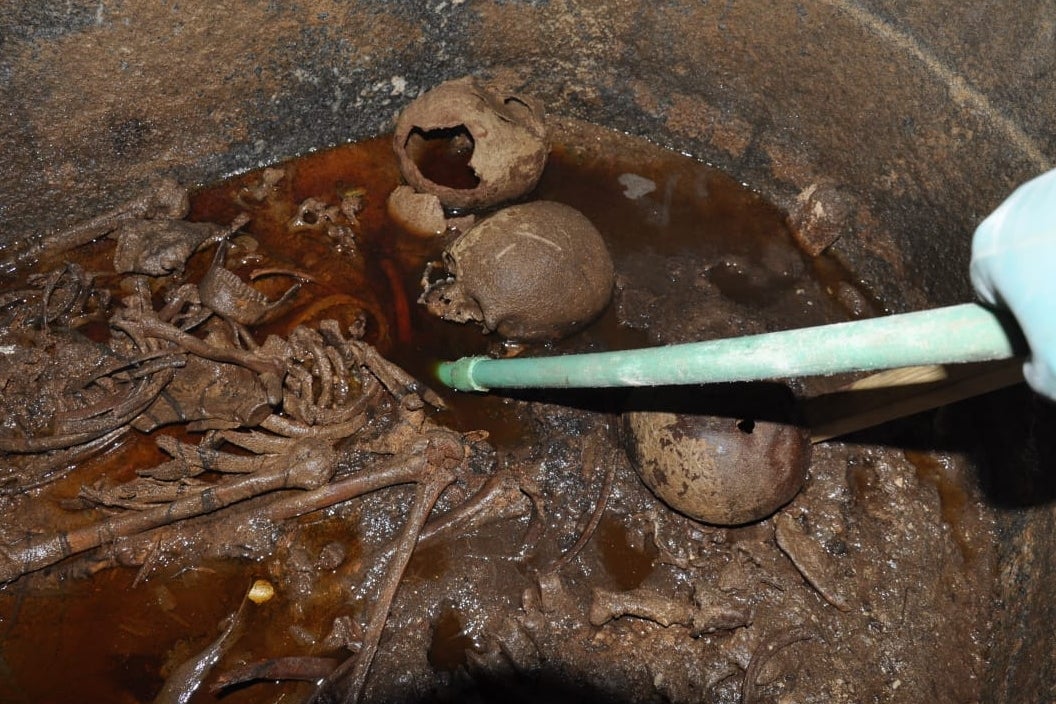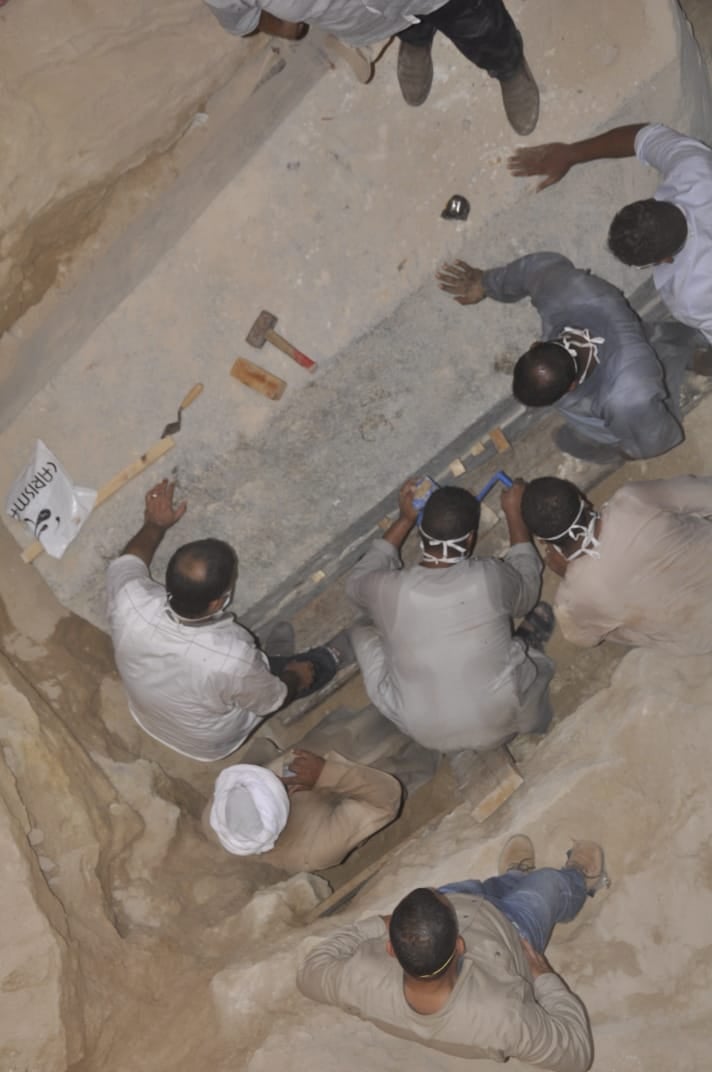Black sarcophagus: Archaeologists announce the approximate ages of the Egyptian mummies
'Preliminary examination suggests the skeletons belong to three army officers, one of them his skull shows an injury of an arrow'

Archaeologists have determined the approximate ages of the three skeletons found in a black granite sarcophagus uncovered in Alexandria, Egypt, in July.
Following speculation that the casket could contain the remains of ancient Greek leader Alexander the Great, researchers began to examine the contents of the mystery 2,000-year-old casket to ascertain when its occupants lived, and how they died.
They have now found the skeletons variously belong to a woman in her early 20s, and two men in their late 30s and early 40s, respectively; none of whom belong to a Ptolemaic or Roman royal family, according to secretary-general of the Supreme Council of Antiquities Mostafa Waziri.
Mr Waziri stressed that the coffin does not have inscriptions or a cartouche bearing royal names, although they were said to be warriors.
'Preliminary examination suggests the skeletons belong to three army officers, one of them his skull shows an injury of an arrow,' Shaban Abd Monem, a specialist in mummies at the Ministry of Antiquities, told Luxor Times.
Although researchers found gold inside some of the bones within the 30-ton, three metre coffin - found buried five metres deep - there were no silver or gold metallic masks, small statues, amulets or inscriptions that could have proved the dead had belonged to a royal family.

They are believed to have hailed from the early Ptolemaic period, which began in 323 BC - after the death of Alexander the Great.
The other two skulls were intact and belong to men, with further tests planned to develop a more precise estimate of their ages and inspect their face shapes, Mr Waziri said, adding that the woman’s skull bore evidence of multiple fractures caused by a sharp instrument.
The red liquid leaking inside the coffin, which caused the mummies to decompose, seeped into the ancient artefact through a crack in its eastern side, Mr Waziri continued, according to Egypt Today, the English-language magazine.
There are plans to move the three mummies to the Alexandria National Museum, while the coffin will be transferred to the Military Museum in Cairo, and servicemen cleared the roads surrounding the site where the sarcophagus is housed to provide greater space for its removal, Alexandria governor Mohamed Sultan told Egypt Today.
He explained that the Ministry of Antiquities will use sensor devices to detect the presence of more antiquities in the vicinity of the sarcophagus, with further studies also planned to determine the exact year it was embalmed.
The Egyptian government department responsible for antiques had appointed a committee of archaeologists to analyse the relic after it was unearthed at a construction site.
Back in July, various media had raised the spectre that prising open the mysterious tomb would unleash a curse.
However, Mr Waziri put the claims to rest upon greater inspection: "We've opened it and, thank God, the world has not fallen into darkness.
"I was the first to put my whole head inside the sarcophagus... and here I stand before you ... I am fine."
Join our commenting forum
Join thought-provoking conversations, follow other Independent readers and see their replies
Comments